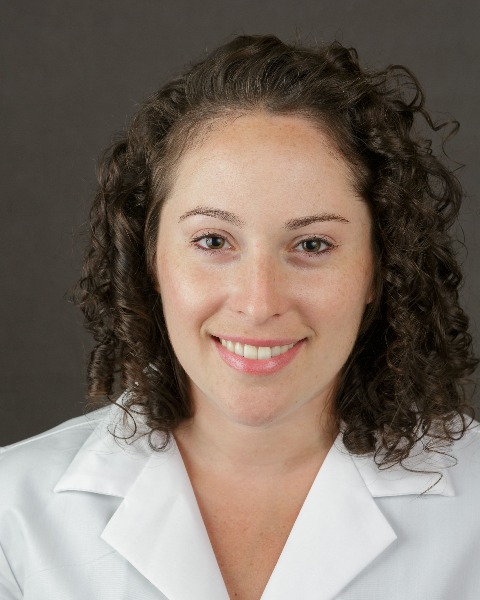Emergency Medicine: All Areas
Category: Abstract Submission
Emergency Medicine XI
409 - Variability in National Access of Advanced Level Prehospital Care for Children with Seizures
Sunday, April 24, 2022
3:30 PM - 6:00 PM US MT
Poster Number: 409
Publication Number: 409.315
Publication Number: 409.315
Maytal Firnberg, University of California, San Francisco, School of Medicine, San Francisco, CA, United States; E Brooke Lerner, University at Buffalo, Buffalo, NY, United States; Nan Nan, Department of Biostatistics, School of Public Health and Health Professions, State University of New York at Buffalo, Buffalo, NY, United States; Chang-Xing Ma, University at Buffalo, Buffalo, NY, United States; Manish I. Shah, Baylor College of Medicine, Texas Children's Hospital, Houston, TX, United States; Clay Mann, University of Utah School of Medicine, Salt Lake City, UT, United States; Peter Dayan, Columbia University, Hastings on Hudson, NY, United States

Maytal Firnberg, MD
Assistant Professor
Icahn School of Medicine at Mount Sinai
New York, New York, United States
Presenting Author(s)
Background: Although early administration of antiepileptic medication improves outcomes for children with seizures, little data detail the access to advanced level prehospital care necessary to provide this intervention.
Objective: We aimed to determine the variation in access to advanced life support (ALS) and prehospital administration of antiepileptic medication for children with seizures across the United States.
Design/Methods: We analyzed children < 19 years with 911 dispatch codes for seizure in the 2019 National Emergency Medical Services Information System (NEMSIS) dataset. NEMSIS is a national effort aimed to standardize EMS data collection. We defined ALS access as receiving any of the following provider response types: ALS-paramedic, ALS-Advanced Emergency Medical Technician (AEMT), or ALS-intermediate. Regression analyses were conducted to identify potential associations between receipt of ALS response and age, sex, location (urbanicity codes) and U.S. census regions. Race, ethnicity, and insurance status were missing for >60% and were not analyzed. For patients with provider impressions of seizure, we also conducted regression analyses for the secondary outcomes of antiepileptic medication administration (yes/no) as well as type and timing of medication administration
Results: Of 147,821 pediatric dispatch calls for seizures, 88% received ALS responses. Receipt of ALS response was associated with urbanicity, with wilderness (aOR 0.44, 0.39-0.49) and rural (aOR 0.80, 0.75-0.84) locations having less access than urban areas. Of the 129,733 activations where an ALS provider impression of seizure was documented, antiepileptic medications were administered in 9% of cases. Medication administration was independently associated with age (aOR 1.008, 95% CI 1.005, 1.010) and sex (aOR 1.22, 95% CI 1.18, 1.27), with females receiving medications more than males. Of the 11,698 children who received antiepileptic medications, midazolam was the most commonly used (83%). The median documented time from dispatch to medication administration was 16.75 minutes, with statistically faster time times in urban areas (median 16.44 minutes).Conclusion(s): The majority of pediatric patients across the U.S. have access to ALS response for seizures; however, those in rural or wilderness settings are less likely to have access. Although medications are infrequently administered, further research is required to determine the proportion of children who are continuing to seize upon EMS arrival and would most benefit from immediate and appropriate treatment
08_23_21CV_Firnberg,Maytal .pdf
Antiepileptic Medication Administration by Patient Demographic and Geographic Locations.png)
Objective: We aimed to determine the variation in access to advanced life support (ALS) and prehospital administration of antiepileptic medication for children with seizures across the United States.
Design/Methods: We analyzed children < 19 years with 911 dispatch codes for seizure in the 2019 National Emergency Medical Services Information System (NEMSIS) dataset. NEMSIS is a national effort aimed to standardize EMS data collection. We defined ALS access as receiving any of the following provider response types: ALS-paramedic, ALS-Advanced Emergency Medical Technician (AEMT), or ALS-intermediate. Regression analyses were conducted to identify potential associations between receipt of ALS response and age, sex, location (urbanicity codes) and U.S. census regions. Race, ethnicity, and insurance status were missing for >60% and were not analyzed. For patients with provider impressions of seizure, we also conducted regression analyses for the secondary outcomes of antiepileptic medication administration (yes/no) as well as type and timing of medication administration
Results: Of 147,821 pediatric dispatch calls for seizures, 88% received ALS responses. Receipt of ALS response was associated with urbanicity, with wilderness (aOR 0.44, 0.39-0.49) and rural (aOR 0.80, 0.75-0.84) locations having less access than urban areas. Of the 129,733 activations where an ALS provider impression of seizure was documented, antiepileptic medications were administered in 9% of cases. Medication administration was independently associated with age (aOR 1.008, 95% CI 1.005, 1.010) and sex (aOR 1.22, 95% CI 1.18, 1.27), with females receiving medications more than males. Of the 11,698 children who received antiepileptic medications, midazolam was the most commonly used (83%). The median documented time from dispatch to medication administration was 16.75 minutes, with statistically faster time times in urban areas (median 16.44 minutes).Conclusion(s): The majority of pediatric patients across the U.S. have access to ALS response for seizures; however, those in rural or wilderness settings are less likely to have access. Although medications are infrequently administered, further research is required to determine the proportion of children who are continuing to seize upon EMS arrival and would most benefit from immediate and appropriate treatment
08_23_21CV_Firnberg,Maytal .pdf
Antiepileptic Medication Administration by Patient Demographic and Geographic Locations
.png)
